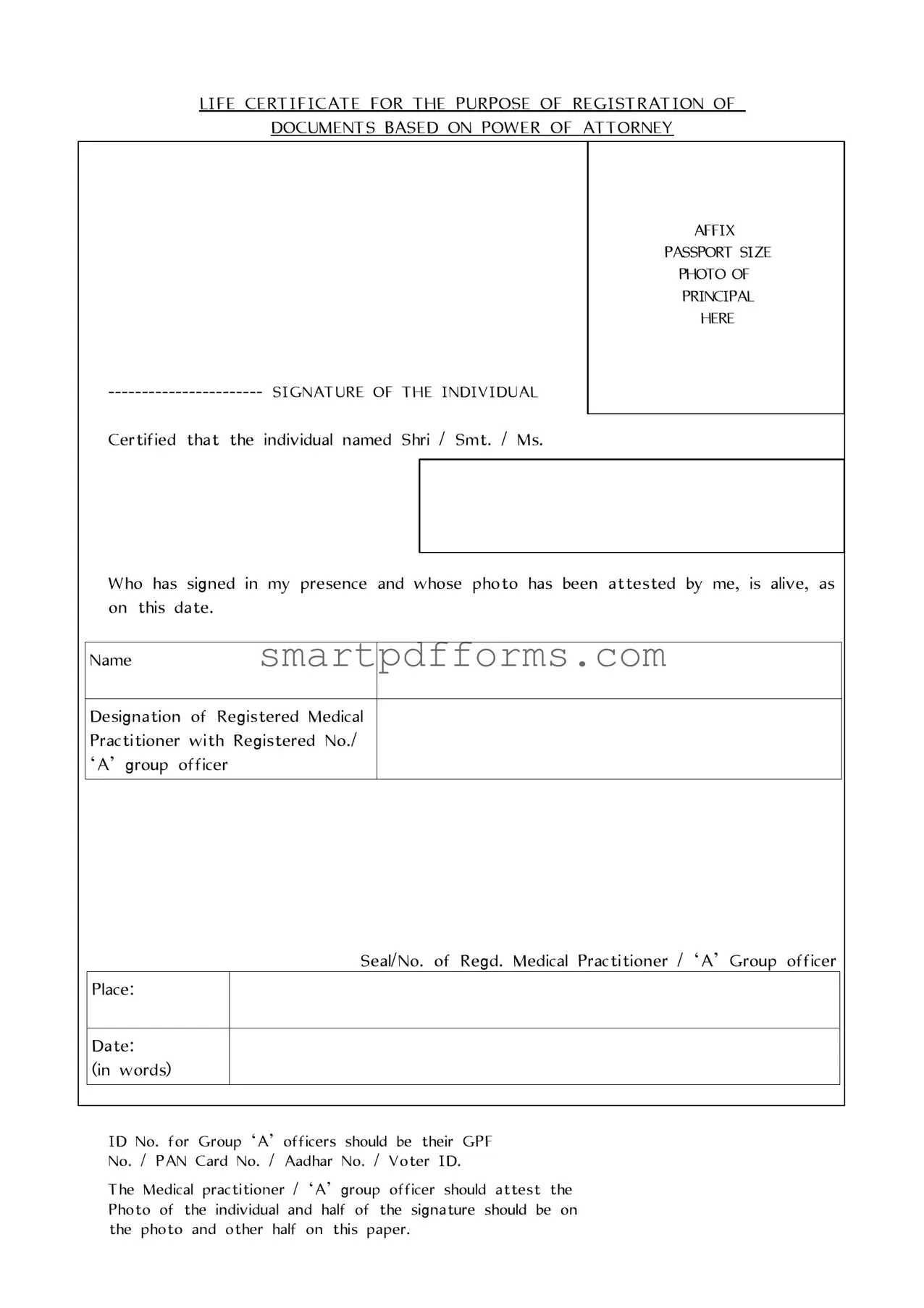Blank Life Certificate Registration PDF Template
The Life Certificate Registration form is a critical document required for verifying the existence of an individual, who has granted power of attorney, for the registration of documents. This form necessitates certification by a registered medical practitioner or a 'A' group officer, ensuring the principal is alive at the time of document submission. For those holding or managing power of attorney, filling out this form accurately is paramount.
Ensure your documentation is complete and up to date by clicking the button below to fill out the Life Certificate Registration form.
Make This Document Now

